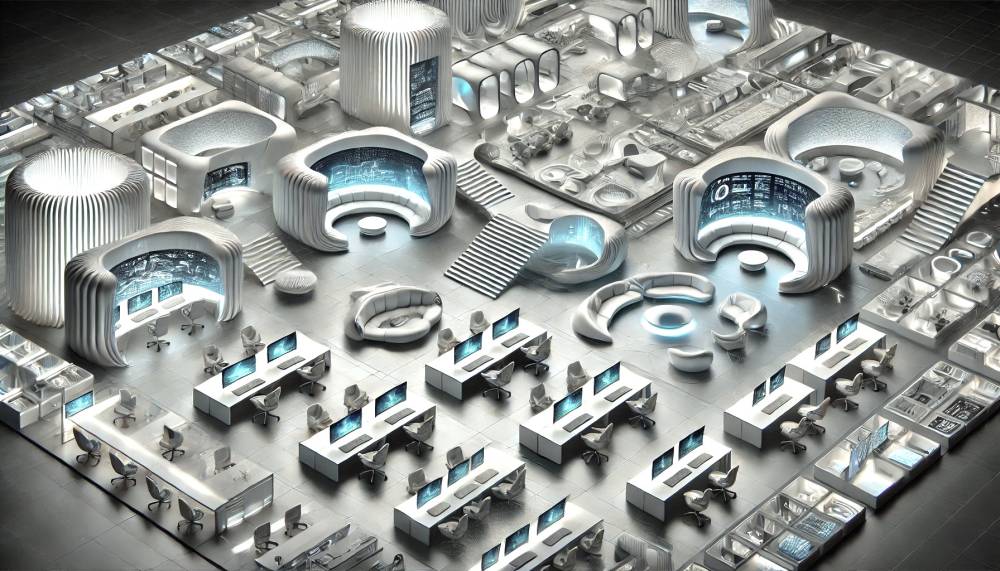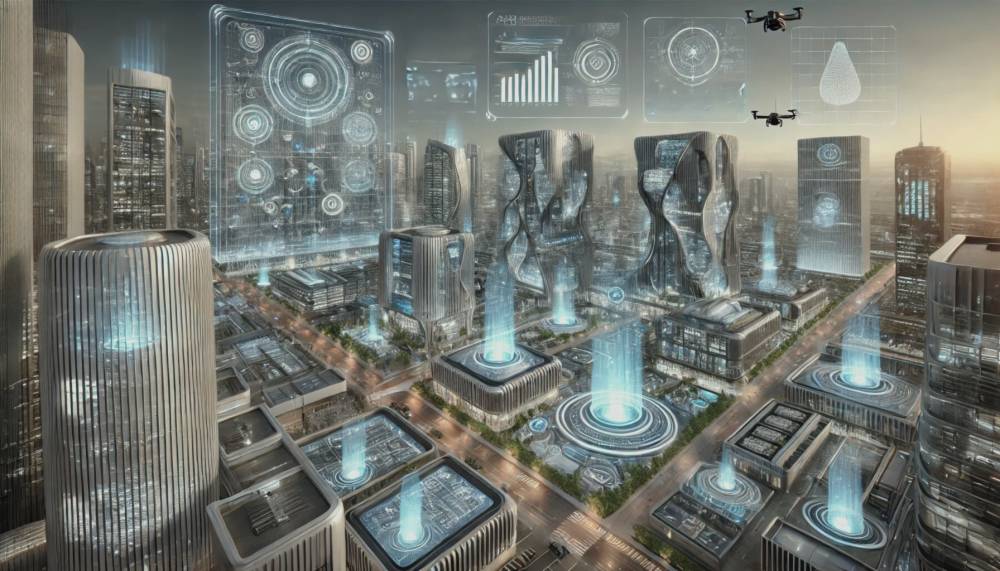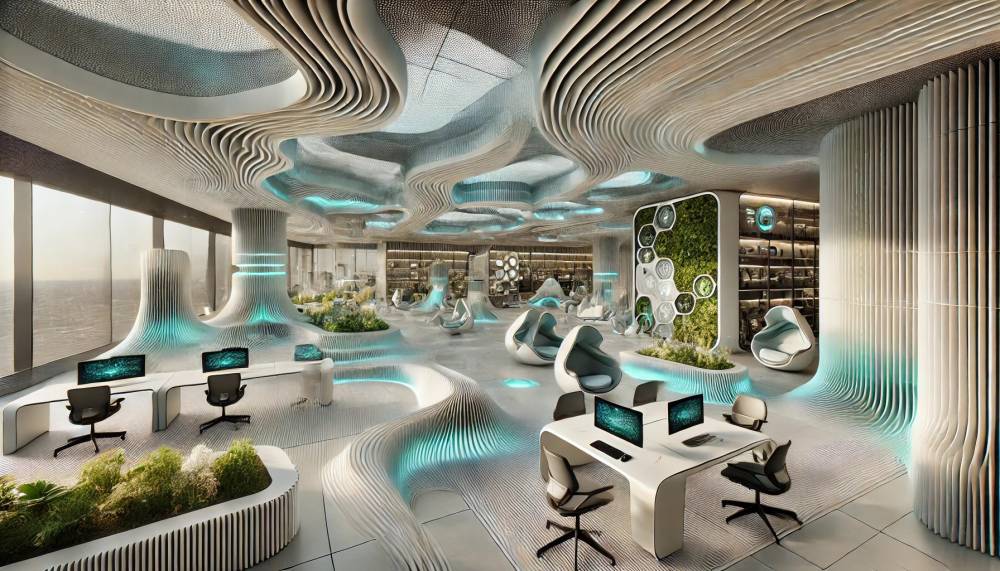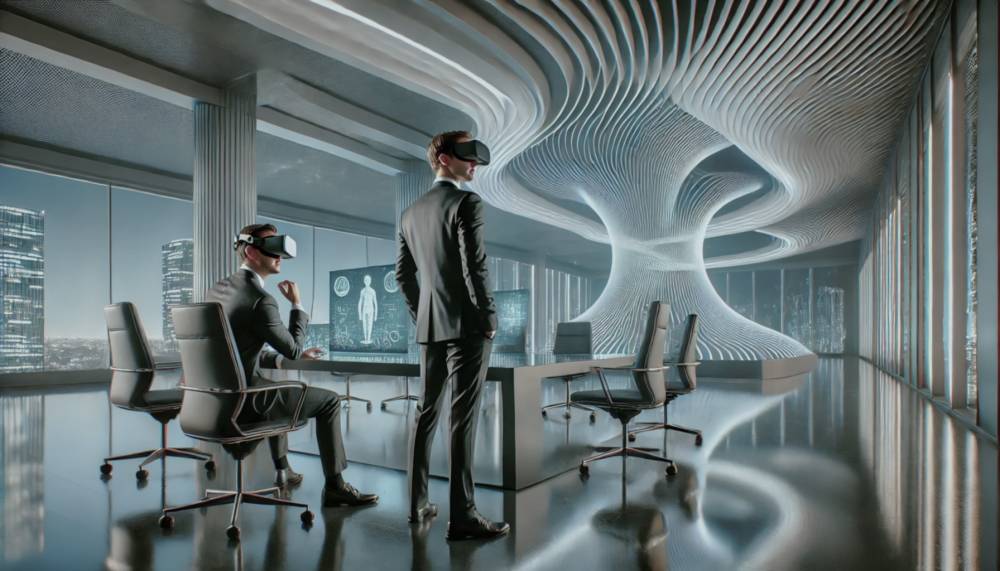Adaptable office spaces driven by AI

The office is evolving into an interactive, adaptive environment that actively supports human productivity, comfort, and collaboration.
As AI technology advances, architects and designers integrate data-driven intelligence into every aspect of the office, from spatial layouts to real-time environmental adjustments. This new wave of technological shift, including modular spaces, significantly departs from traditional static office designs, shifting toward more fluid and responsive interiors.
Designing with data
AI integrates predictive analytics, sensory technology, and machine learning in office interiors to create responsive, personalized environments. These spaces, tailored to employee needs and preferences, could enhance productivity and well-being.
For instance, AI systems can analyze usage patterns and environmental factors to adjust lighting, temperature, and acoustics for comfort and energy efficiency, crafting spaces that actively respond to the workforce rather than requiring manual adjustments.

Modular, adaptable spaces
Modular design has taken center stage in creating office spaces that adapt effortlessly to changing business needs.
Movable walls, versatile furniture, and flexible layouts allow workspaces to transform seamlessly based on team requirements or project needs.
AI adds another layer to this adaptability by analyzing space usage patterns and adjusting to optimize layout and functionality. Today’s technologies help identify when collaborative spaces are in high demand, or when quiet zones need more separation.

Data-driven pre-design simulation
The pre-design phase itself is evolving with AI, allowing architects to run simulations that mimic the life cycle of the building and account for potential fluctuations in data. Machine learning can predict space utilization trends based on demographic and organizational data, preparing designers with evidence-based insights about how space might need to evolve.
These predictive simulations inform how designers can create a framework of flexible, multi-use spaces tailored to anticipated changes in patterns over time.

Next generation business owners
Business owners of the future will operate with unprecedented access to predictive data, enabling them to anticipate market trends, client needs, and operational shifts with remarkable accuracy.
This shift will likely lead to a new breed of business leaders focused less on direct management and more on oversight and decision-making, guided by data-driven insights provided by AI advisors. They may also need to develop a hybrid skill set that balances traditional business acumen with digital literacy, strategic thinking, and adaptability to leverage big data effectively.

Future workers and roles
As intelligent systems handle data-heavy processes, workers will focus more on strategic, human-centered skills such as innovation, emotional intelligence, and interdisciplinary collaboration. This shift underscores the value of human skills in the future workplace, making workers feel integral and valued.
Workers in this environment will likely engage with the next level of AI as collaborators rather than mere tools.
Hybrid roles that combine traditional skills with AI interaction will become standard, and workers will need to learn how to work alongside these systems to achieve enhanced productivity and creativity. It will support more decentralized and flexible work arrangements, blurring the boundaries between office spaces and remote work.
The author (www.ianfulgar.com), is a leading architect with an impressive portfolio of local and international clients. His team elevates hotels and resorts, condominiums, residences, and commercial and mixed-use township development projects. His innovative, cutting-edge design and business solutions have garnered industry recognition, making him the go-to expert for clients seeking to transform their real estate ventures

















